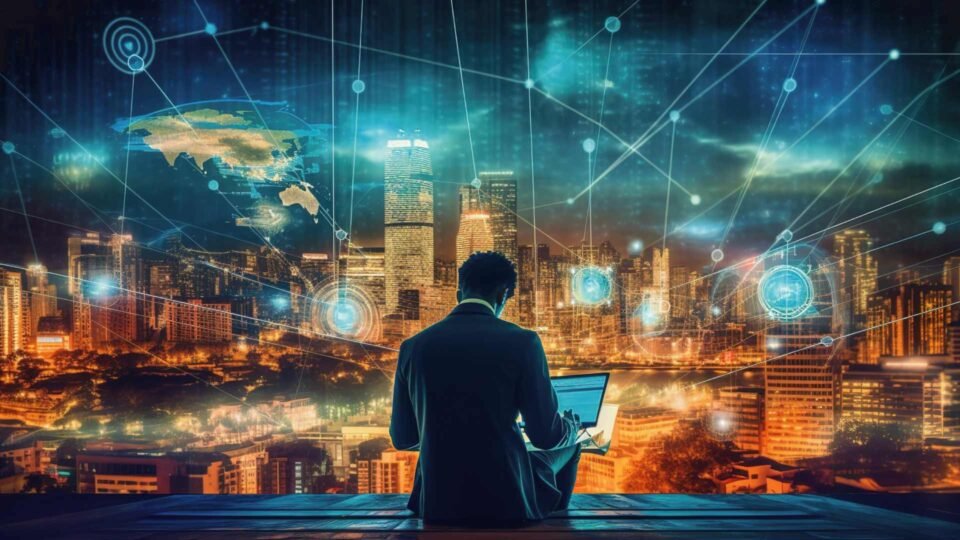Discover how spatial computing enables people to interact with digital information in a physical space.
Table of Contents
Introduction
1. The Technology Behind Spatial Computing
2. The Area of Applications of Spatial Computing
2.1. Logistics and Supply Chain Optimization
2.2. Augmented Reality in Manufacturing
2.3. Smart Buildings and Facility Management
2.4. Urban Planning and Construction
3. Conclusion
Introduction
In the digital era, spatial computing (SC) is a rapidly evolving field as we have started to interact with humans and machines in three-dimensional spaces. Technologies under this umbrella, including augmented reality (AR) and virtual reality (VR), can redefine the enterprise’s interaction with these gadgets and unlock a new realm of possibilities and opportunities.
Today, spatial computing is no longer a vision but a reality for finding the correct applications in numerous fields, especially in the business world.
In this AI Tech Park article, we will take a closer look at how spatial computing is the new solution for IT professionals who are looking to improve their data analysis and process optimization.
1. The Technology Behind Spatial Computing
Spatial computing has emerged as an interactive technology that can merge the digital and physical worlds, allowing users to interact with computers in an immersive and seamless manner.
With the help of a wide range of technologies, such as artificial intelligence (AI), camera sensors, computer vision, the Internet of Things (IoT), AR, VR, and mixed reality (MR), IT professionals can develop new technologies, a seamless business process, and better data analysis to optimize the process.
This technology employs numerous devices and hardware components to provide an interactive customer experience. A few well-known devices in the business world are smart glasses such as Apple Vision Pro and Meta Quest 3, which interface virtual objects with the real world.
Another interactive spatial computing technology is the depth camera by Microsoft Azure Kinect and the Intel RealSense D400 series, which captures the depth of the physical world and creates virtual objects that will fit into the real world.
Spatial computing leverages numerous technologies, such as machine learning (ML), advanced sensors, and computer vision, to understand and interact with the physical world.
Computer vision, also a subset of AI, enables computers to process and understand visual information by tracking users’ movements and understanding the environment. This allows IT professionals to create a digital representation of the physical world, which can be further used to overlay digital content onto the real world.
ML is another key technology in spatial computing that IT professionals use to train computers to understand and predict user behavior. For instance, if the user reaches to touch a digital object, the computer needs to understand this information and take action to respond accordingly and further predict the user’s future actions.
Sensors are also an essential component of spatial technology as they provide the data that the computer needs in the physical world, which includes the user’s behavior, environment, and interaction with digital content.
2. The Area of Applications of Spatial Computing
At the business level, spatial computing technology enables machines to collect information about the physical environment and gather data on the movements and behavior of employees working in their workspace.
2.1. Logistics and Supply Chain Optimization
B2B logistics and supply chain companies often use spatial computing technologies to improve the flow of raw materials and goods in their supply chains. The machines have built-in location data sensors, real-time analytics, and sensors to track shipments, efficiently manage inventory, and optimize routes.
2.2. Augmented Reality in Manufacturing
In the manufacturing industry, spatial computing is used to employ AR technology for the production process, where employees can use AR glasses to receive digital instruction and real-time visual aids that will guide them. The implementation of AR has proven to be quite efficient and has reduced the error of miscalculation in purchase, distribution, and installation by 62%.
2.3. Smart Buildings and Facility Management
The implementation of spatial computing is to create smart buildings that automatically optimize resources such as air conditioners, lights, heating, or any other gadgets that are linked with this technology. The integration of advanced sensors and data analytics allows electronics and technology companies to improve users’ energy consumption and reduce companies’ operational costs as they adhere to environmental responsibility laws and regulations.
2.4. Urban Planning and Construction
In the field of architecture and construction, numerous developing and developed cities are using spatial computing to plan and optimize urban spaces. With spatial computing capabilities, especially with mixed reality headsets, architects and civil engineers can design buildings through 3D models. Further, they can analyze the traffic flows, neighboring infrastructure, and demographic data to develop an informed decision to address traffic and water issues and promote sustainable development.
3. Conclusion
Spatial computing is indeed considered the future of technology, as it has the potential to revolutionize any industry by enabling human interaction with machines and the environment. This innovative blend of the virtual and physical worlds provides immersive experiences and boosts productivity. At its core, spatial computing integrates MR, VR, and AR to bridge the gap between the real world and the digital realm, which helps shape the future of technology.
Explore AITechPark for top AI, IoT, Cybersecurity advancements, And amplify your reach through guest posts and link collaboration.

